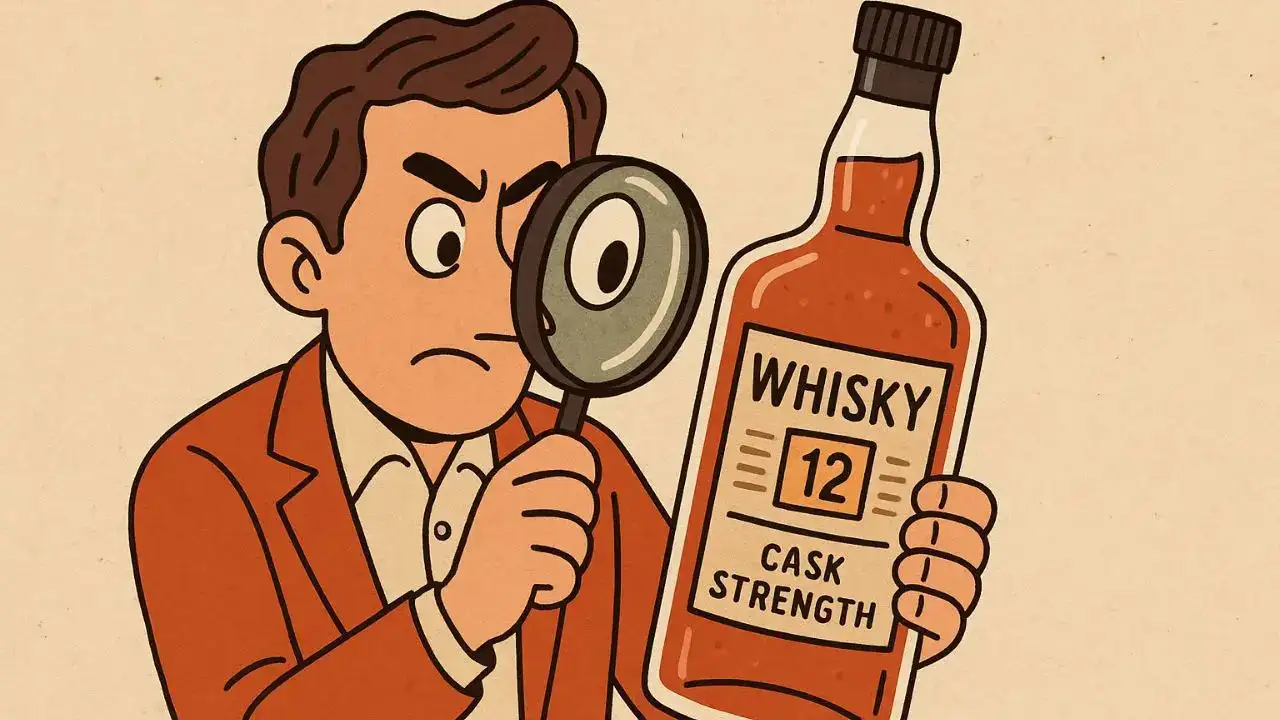By Eshita Bhargava
You’ve spent twenty minutes pacing the liquor store aisle, hoping the shopkeeper mistakes your hesitation for expertise. You pick up a bottle—perhaps it’s aged, perhaps it’s rare—and stare at the label, hoping for divine intervention. What exactly is cask strength? Why does it say Highlands? And how does one tell if a whisky is smoky, smooth, or likely to burn a hole in your wallet and your throat? Truth be told, whisky labels are like coded love letters from the distiller to the drinker—filled with clues, hints, and inside jokes for those who know how to read between the lines. They can reveal everything from the drink’s personality to its upbringing. Think of it as whisky’s version of a résumé. Once you understand the keywords, you’ll not only shop smarter but drink better. Here’s a deep dive into the most important details to spot on a whisky label—whether you’re a budding enthusiast or just trying to avoid looking clueless at your next dinner party. 1. Type of Whisky: Blended, Single Malt or Grain? First things first—what are you drinking? Whisky type sets the foundation. A bottle might read Single Malt Scotch, which means it’s made from malted barley at a single Scottish distillery and aged for at least three years. These are often seen as the gold standard for purists. On the other hand, Blended Scotch combines multiple single malts and grain whiskies to create a consistent flavour—think Johnnie Walker or Ballantine’s. There’s also Single Grain and Blended Malt to watch out for, and if you’re in Japan or India, the label might carry different legal definitions, so always consider country of origin. Fun Fact: Scotch must by law be made in Scotland. Anything else is simply whisky—no “e” if it’s Scottish; with an “e” if it’s Irish or American. 2. Age Statement: The Number That Counts That little number you see—say 12, 15 or 21—refers to the youngest drop of whisky in that bottle. So a 21-Year-Old Blend might have older whiskies blended in, but none younger than 21. This isn’t always about snobbery. Older whiskies tend to be smoother, richer and more complex due to longer contact with the wood casks. If the label reads No Age Statement (NAS), don’t scoff. Some distillers skip the number to focus on flavour rather than age—and these bottles can be just as exquisite (and sometimes even pricier). 3. Region: Where the Whisky Comes From Matters The region stamped on a label is like the whisky’s hometown, and yes—it changes everything. For Scotch, the main whisky regions are: Highlands: Bold and varied Speyside: Fruity, elegant, and home to brands like Glenfiddich Islay: Smoky, peaty, with sea-salt notes (think Laphroaig) Campbeltown: Slightly funky and briny Lowlands: Gentle, light-bodied whiskies Outside of Scotland? Irish whiskies are typically smoother, Japanese whiskies precise and elegant, and Indian whiskies like Amrut or Paul John pack tropical warmth. 4. ABV: The Boozy Backbone ABV stands for Alcohol By Volume, and this one’s easy—it’s the percentage of alcohol in the bottle. Most whiskies sit between 40% and 46% ABV, while anything over 50% usually signals a bolder, punchier flavour. Pro Tip: Higher ABV often means a richer, more layered sip—but you may want to add a splash of water to mellow it and bring out the aroma. 5. Cask Strength: No Water, No Nonsense If your whisky says Cask Strength or Barrel Proof, it means what you’re drinking is as close to the whisky straight from the barrel as legally possible. No dilution. No chill-filtering. Just raw spirit and oak doing their thing. Expect an intense flavour and a kick like a Highland cow—but whisky nerds swear by it. 6. Bottle Size: Does It Measure Up? This one’s straightforward but often overlooked. Common sizes include 750ml, 375ml, and 180ml. Miniatures may come in 90ml or 60ml (perfect for sampling or travel). Don’t let price tags mislead you—compare sizes before you compare cost. 7. Cask Type: Bourbon, Sherry or Exotic Oak? This detail can seriously alter your dram. Look for mentions like: Ex-Bourbon Casks: Vanilla, honey, light spice Sherry Casks: Dried fruits, nuts, rich mouthfeel Wine or Port Casks: Fruity, often red-tinted whiskies Some labels even list exotic casks like rum, sake or mizunara oak (a rare Japanese variety). These impart unique flavour signatures that serious collectors chase. 8. Distiller or Brand: The Signature Behind the Sip Is it Glenlivet? Macallan? Amrut? The name on the label is not just branding—it’s the fingerprint. For single malts, the distillery gets pride of place. In blends, you’ll often see the company or master blender acknowledged. Reputation matters in the whisky world. Some brands carry centuries of legacy (The Glenlivet dates back to 1824), while newer craft labels are pushing boundaries with bold innovations. Label-Led Wisdom So the next time you reach for a bottle of whisky, pause. Take a good, long look at the label. It’s not just fancy script or marketing fluff—it’s the whisky’s backstory, geography, character, and promise. Understanding these elements won’t just help you choose better—it might also help you hold your own during whisky-fuelled conversations. And maybe—just maybe—you’ll finally stop asking the bartender, “Is this single malt?” when the label already told you so. Now read that label again. This time, with pride.
